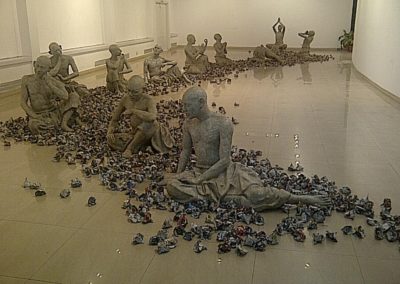Dance of Life

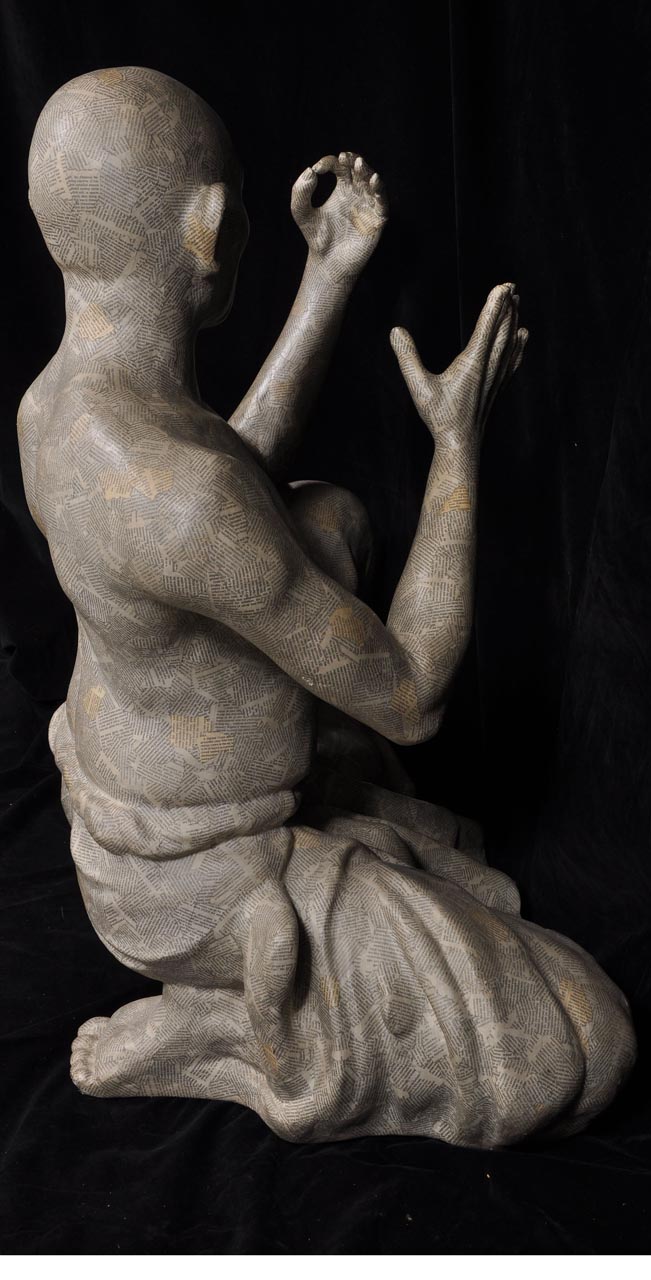







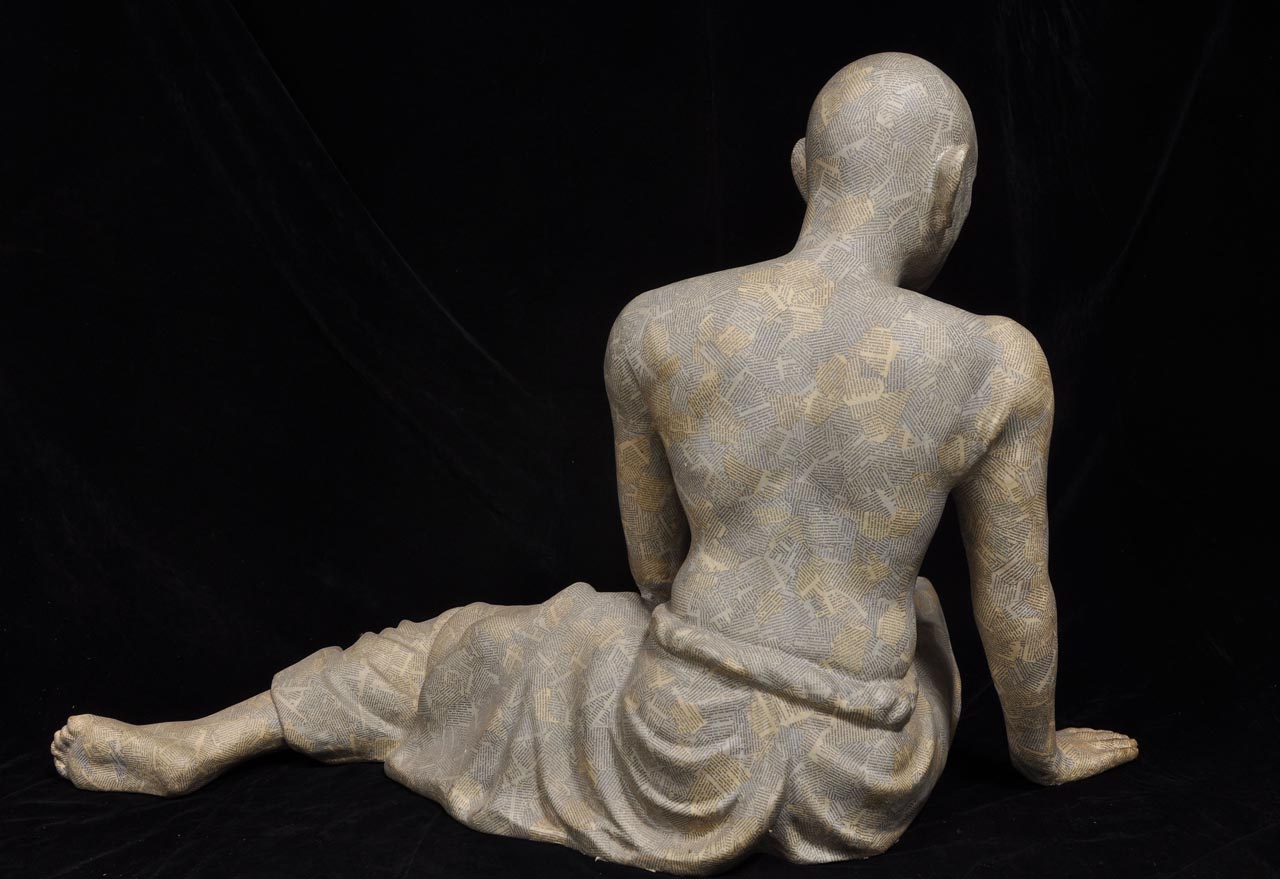









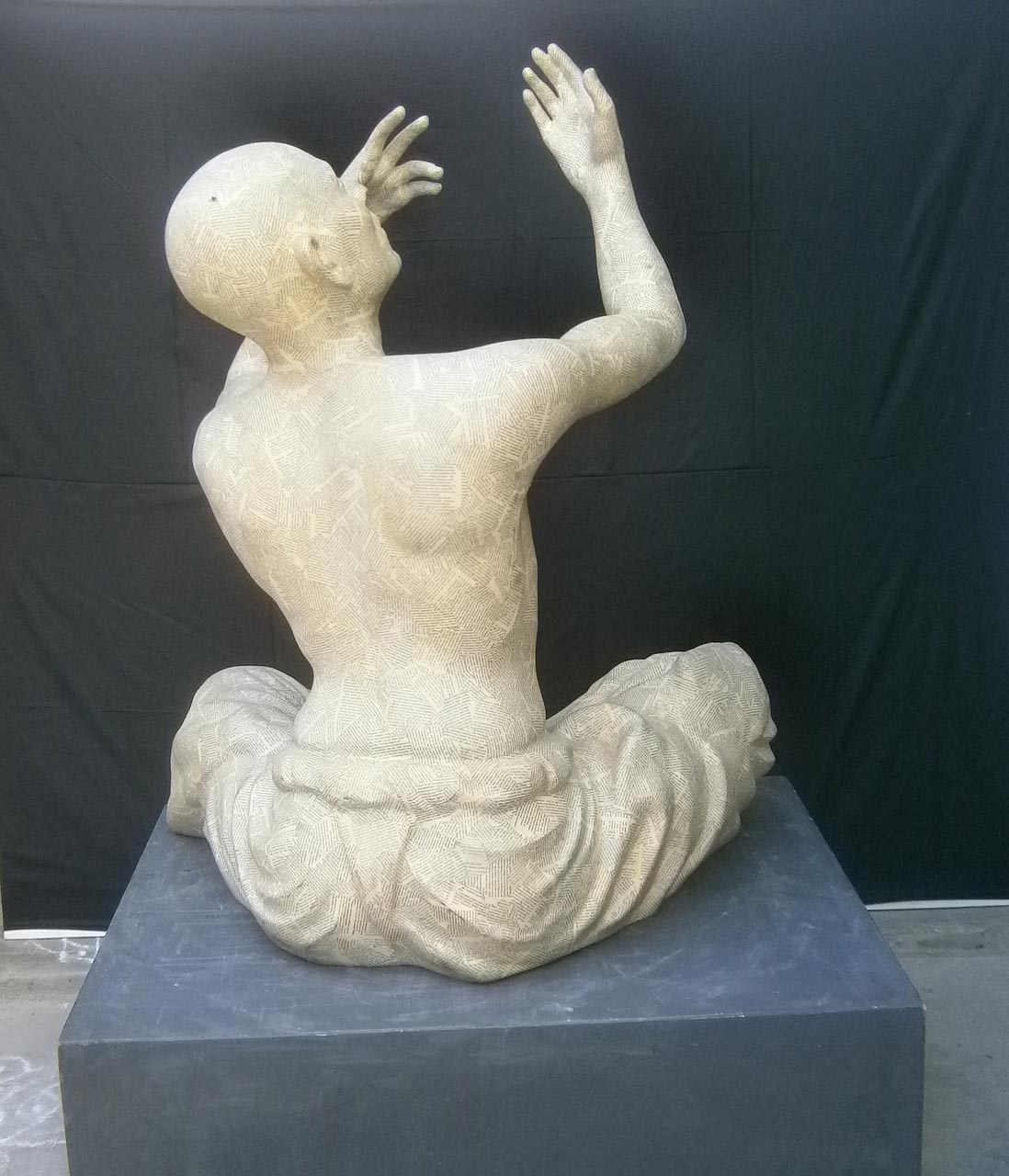

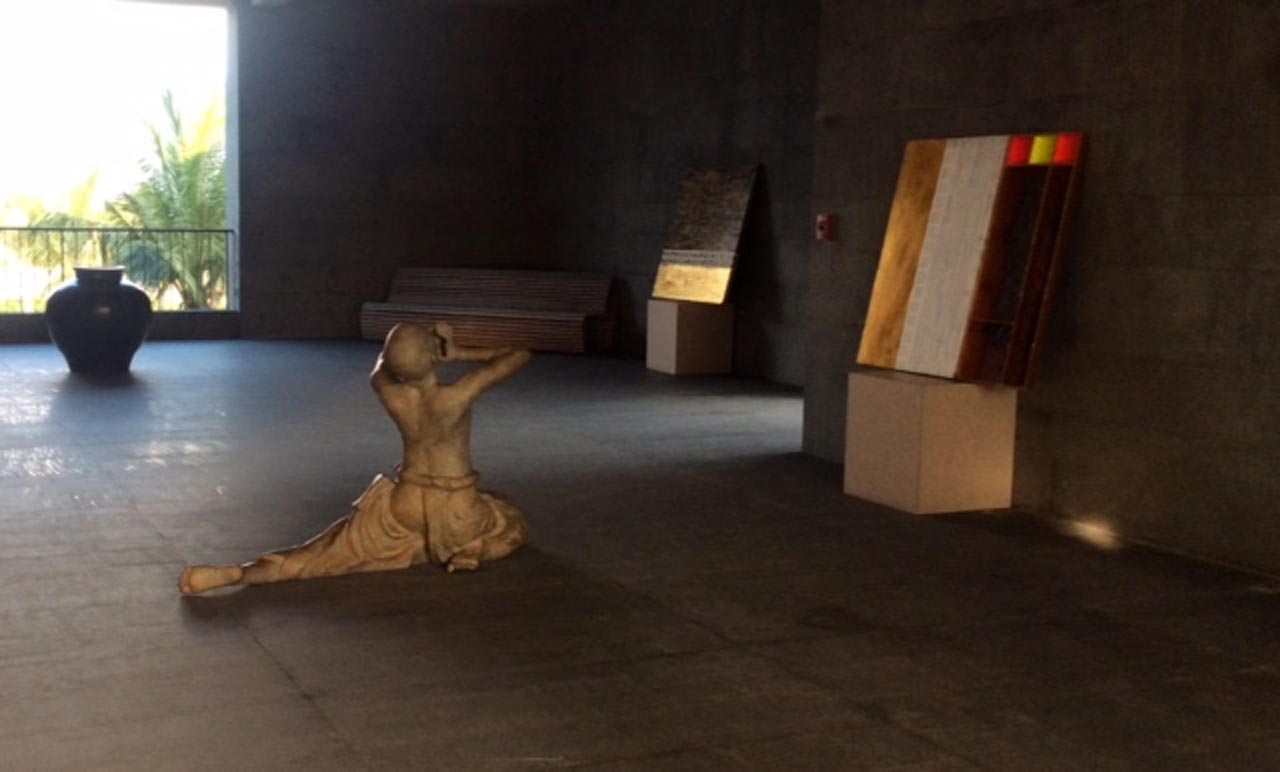


“The dance of life” are fiberglass sculptures in life size with the outer skin in newspaper. The body of work was inspired by Marvin khoo’s classical dance performance. A classical dancer clad in the skin of newspaper (a metaphor for a material world immersed in a barrage of current news )meditates on the space between illusion and reality. The artist explores the concept of oneness ( with the immortal soul) through the posture and gestures of the dancer. Drawing movement and gestures from classical dance forms the the artist meditates on duality,male-female, formless, and matter and energy. The dancer questions whether life is an illusion and the artist users the newspaper skin to portray the multitude of images , and news that bombard, a metaphor for reality of the present. The bed of paper flowers personifies the fragile state of being.
APPEARANCE…BEYOND APPEARANCE….
- ASHRAFI S. BHAGAT
George K., the Chennai based internationally established artist is a conceptual flaneure, which is central to his artistic persona whether it is painting, photography or sculpture. Within the milieu of the contemporary world, radical changes have consistently taken place in the use of medium, materials, techniques, discourses and perceptions, making it possible to make out a case of radical conceptualization in the art of George K. His concerns are dominantly social, reflecting its varied dimensions that impact the viewer’s sensibility. This includes engagement with the representation of socially marginalized ‘third gender’, the depleting ratio of male to female in India or philosophical reflections on man-animal drawing out saliency of characteristics and relating it to each other. It is more than a decade since George entered into the art arena, yet he did not confine himself to one dimension of art making. His interest started with photography, and moved on to painting and sculpture including poetry writing . With interests centered on the intricacies and vagaries of life, it is not surprising that this artist with his sharp sensibility, acute perception and social sensitivity offers scrutiny of life’s complexities.
Art Critics and Art Historian Clement Greenberg, Michael Fried and T.J. Clarke have believed that great art works carry a burden of philosophical meanings and significance which has a value in itself. Since art is an important cultural institution that transmits and reflects, values, meanings and beliefs, George in his present series’s of sculptures George, whose reflections on life are varied, conceptually moves with élan into the philosophical arena. His full figure newspaper skin sculptures titled “Tthe Dance of Life” are derivatives of dance postures, which he captured in photographs and then translated three dimensionally. He has been deeply inspired by Indian philosophy, particularly the duality in the concept of male and female represented as a union of nature [female] and eternal man or the representation of creative energy in the form of Siva [one of the Indian trinity] and his consort Shakti. These philosophical metaphors of duality fundamentally inscribe the search of the soul for a union with the absolute, or form becoming formless; the premise on which all his works are developed. These sculptures capturing the dance poses, indirectly glancing towards the dance of destruction of Shiva in his manifestation of Nataraja, their gestural rhythms inscribes a temporal space that translates as momentary; linking it to an illusory reality or Maya within the Indian context or an idealized truth in terms of Plato’s philosophy. That is, a search for perfection in a world of absoluteness, where the soul desires to merge. According to George, “The body of work, ‘the dance of life’ is on the duality of existence and “maya” the ultimate illusion. It questions whether human existence is an illusion and the illusion is a cosmic mirage”. The newspaper skin in this instance extends similarly the notion of temporality, and ephemerality as the performance happens in the present.
Journey for George is metaphorical, linked directly to the process of sculpture making and it is heightened by finishing in this instance; not with graffiti but painstakingly and meticulously applied bits of newspaper; a process that is physical intensive. The methodology involves photographing dancers capturing those vital moments as they strike different poses, evoke emotions and exhibit different gestures. He digitally works the image on the computer to finalize the form he desires. The process is carried forward by modeling the form in clay and later cast in plaster for non reusable glass fiber moulds. After it is cast, the image is filed and polished. Over the bare skin, neatly cut rectangular pieces of newspaper are fixed on the surface with an adhesive, until it is entirely covered. It should be stressed however that the physical process in the construction of his sculptures is carried out by a ‘studio team’ under his direct supervision. The ‘studio team’ of his group of technical workers, George clarifies, “The artisans employed by me for my paintings and more so for my sculptures are like studio help – welders, grinders, potters, fibre glass technicians, bill board painters etc, who executes the job assigned to each of them under my visual supervision. I have a studio team that works on various aspects of the work”. An act of this nature establishes multiple cross-over between art, techniques and mass images. Through deconstruction by spectators / viewers / critics / connoisseurs, it translates to be represented back in high art or art world context.
His methodology in the making of these paintings was to interface with digital technology. It is a process for George in arriving at his final compositions. Compositional exploration involve reviewing photographs, enhancing texture and density through Photoshop, making selections and arbitrarily superimposing images, forms and colours to confirm with his concept. The layering becomes metonymical, explicitly declaring the whole performance as a journey in search of final truth. The hoarding artists painted on canvas from final prints that George compositionally worked out, which were finally inscribed by his personal touch with graffiti or doodles on the surface.
The three series of body of art works is exemplary in their conceptualization, creating a trajectory that is social and philosophical, bound together by a thread of commonality, namely of time and space, which for the artist serves as a leitmotif for memory. It also marks a journey of self search for the artist by converging his experiences in varied artistic mediums. The effortless oscillation between the iconic and the personal, the decorative and the expressive, the sensuous and the conceptual, the playful and ironic comes from this insight.
Ms. Ashrafi S. Bhagat. M.A., M. Phil., Ph.D., is the Associate Professor and Former Head, teaching at the Department of Fine Arts, Stella Maris College, [Autonomous] Chennai. She is an Art Historian, Art Critic and an Author. She has to her credit a research paper titled Lineage of Abstraction within the Madras Art Movement published in the book “The New Art History: Studies in Indian Art” [eds.] Shivaji K. Pannikkar, Parul Mukherjee, Deepty Achar, New Delhi, 2003]. A book “Sculptural Configurations: Retrospective Progressive”. Published by Oxford University Press April 2003, a monograph on the Madras artist A.P. Santhanaraj published by Lalit Kala Akademy, New Delhi, June 2006 and many others. She was invited by the MARG journal, to be Guest Editor for a special edition on South titled “The Southern Terrain” published in December 2010
Press Coverage
India Art Fair
A change is gonna come
The Economist
Shows
